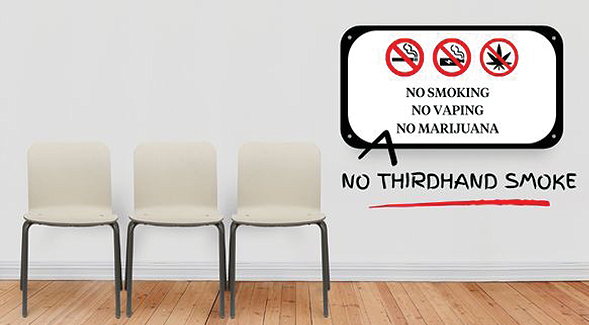California Tobacco Researchers Recommend Policy Changes to Defend Against Thirdhand Smoke
Study led by researchers from SDSU and other institutions finds gaps in smokefree policies and proposes solutions to protect the public

It’s well-known that tobacco smoke has harmful effects on both people who smoke and those around them who are exposed to secondhand smoke. But this threat exists in another form as well: thirdhand smoke, the chemical residue from tobacco smoke that lingers even after the smoking has ceased.
A new study led by Georg Matt from San Diego State University and Neal Benowitz from University of California, San Francisco reveals policy gaps that leave the public unprotected from thirdhand smoke and offers solutions for remedying this issue.
Since the 1970s, more and more public health policies have moved to protect against secondhand smoke exposure, helping establish laws that prohibit indoor smoking in workplaces, public transportation, hospitals, schools and restaurants. While these measures have been instrumental in protecting public health, saving lives, and reducing health care spending by billions of dollars, the researchers say they lack critical safeguards against thirdhand smoke.
Thirdhand smoke contains hundreds of toxic chemicals linked to detrimental health effects including cancer, birth defects and reproductive harm, and asthma and other respiratory diseases.
Moreover, thirdhand smoke disproportionately affects already vulnerable populations, with children, older individuals and those with compromised immune systems most likely to be exposed. Low-income communities, which exhibit higher smoking rates, also experience disproportionate exposure to this chemical residue.
In addition, thirdhand smoke is pervasive and persistent. It adheres to surfaces, accumulates in dust, and infiltrates building materials, furniture, carpets, and clothing, allowing it to linger for years in buildings and cars even after the smoking has stopped.
Traditional remediation methods are rendered ineffective as the residue becomes embedded in walls, carpets, and furniture and can be transferred by physically moving items such as used clothing or furniture that harbor thirdhand smoke. The threat is exacerbated by the fact that exposure can come from inhalation, ingestion, and even skin contact.
In this analysis recently published in the journal Tobacco Control, researchers from the Thirdhand Smoke Research Consortium recommend policies include the following changes to better safeguard the public:
- Redefine smoke-free as free of tobacco smoke pollutants from secondhand and thirdhand smoke.
- Adopt comprehensive indoor smoking bans and eliminate exceptions.
- Identify thirdhand smoke-polluted indoor environments.
- Remediate thirdhand smoke pollution.
Since thirdhand smoke is a form of tobacco product waste, the researchers also suggest that the manufacturers, suppliers and retailers of commercial tobacco products should assume responsibility for preventing and mitigating the extensive, long-term harm and costs brought about by their products.
“Only by including thirdhand smoke in our smoke-free policies can we fully protect people from the toxic legacy of tobacco use in indoor environments,” said Matt.



